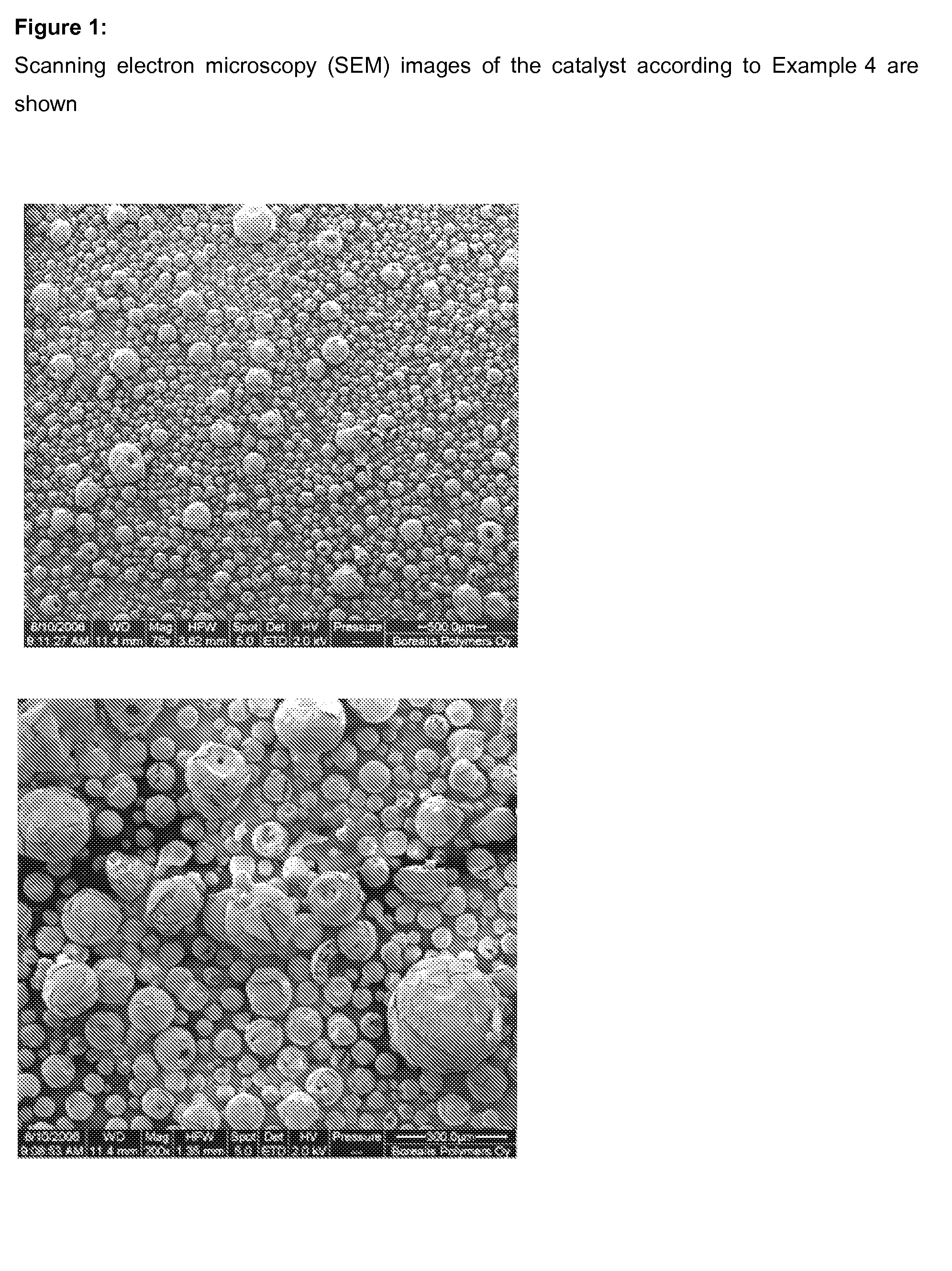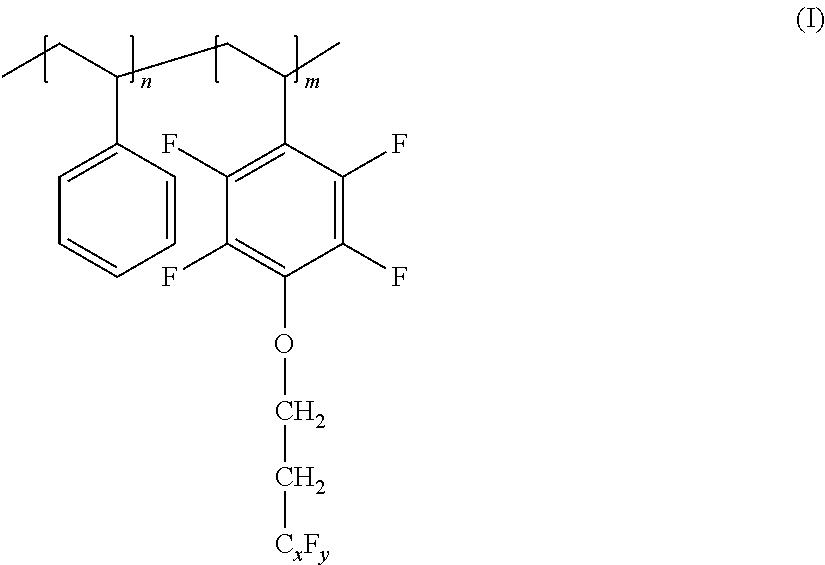Process for the preparation of an unsupported, solid metallocene catalyst system and its use in polymerization of olefins
a solid metallocene catalyst and olefin technology, applied in the field of preparation of olefin polymers, can solve the problems of not being suitable for preserving morphology, not being effective in stabilizing the emulsion, and external support involves additional costs
- Summary
- Abstract
- Description
- Claims
- Application Information
AI Technical Summary
Problems solved by technology
Method used
Image
Examples
example 1
Synthesis of FSF monomer
[0164]Synthesis of 2,3,5,6-tetrafluoro-4-(3,3,4,4,5,5,6,6,7,7,8,8,9,9,10,10,10-heptadecafluoro-decaoxy)styrene (FSF) was as follows:
[0165]1H,1H,2H,2H-perfluorodecanol (16 mmol, Fluka) was mixed with 32 ml of 50% aqueous NaOH. Amounts of 32 ml dichloromethane and 1.6 mmol tetrabutylammonium hydrogen sulphate (TBAH, Fluka, >99%) were added, and the resulting suspension was vigorously stirred. Upon addition of pentafluorostyrene (18 mmol; FS, Aldrich Chemicals, 99%, vacuum distilled to remove stabilizers), the reaction mixture turned slightly yellow. After stirring for 72 h at 40° C., the organic layer was separated and washed with 0.1 M HCl and with water and dried over sodium sulphate. After evaporating of solvent the product was crystallized in methanol. Yield was 30%.
[0166]1H NMR (200 MHz, CDCl3) δ ppm: 2.6 (2H, —OCH2CH2C8F17), 4.45 (2H, —OCH2CH2C8F17), 5.7 (1H, —CH═CH(1)), 6.05 (1H, —CH═CH(2)), 6.65 (1H, —CH═CH2).
example 2
General ATRP Procedure for Macroinitiators
[0167]Bromine terminated polystyrene, PS—Br, macroinitiator was prepared as follows:
[0168]A solution in 5 ml of xylene of 14.6 g styrene (Merck, vacuum distilled before use), 0.32 g phenyl-2-bromopropionate (synthesized as described in Macromulecules, 1999; 32: pp 8732-9 by Haddleton and Waterson using phenol (Merck, 99.5%) and 2-bromopropionyl bromide (Aldrich Chemicals, 98%)), 0.20 g Cu(I)Br (washed with glacial acetic acid, AppliChem, 96%), and 0.44 g bipyridine was prepared in a round bottomed flask (molar ratio monomer:initiator:Cu(I)Br:ligand of 100:1:1:2). The solution was degassed by five freeze-thaw cycles and the sealed polymerization mixture was immersed into a silicon oil bath at 110° C. After 135 minutes reaction time the mixture was cooled down to ambient temperature, diluted with THF and filtered through silica and Al2O3 column. 8.6 g of the macroinitiator was obtained after filtering, precipitation of the polymer in methanol,...
example 3
Procedure for ATRP of the Fluorinated Monomers; Preparation of PS4000-b-PF C8F17
[0173]A solution in 5 ml of xylene of 3.3 g FSF (monomer, as prepared in Example 1), 0.90 g macroinitiator (bromine terminated polystyrene; as prepared in Example 2), 0.024 g Cu(I)Br and 0.053 bipyridine was prepared in a round bottomed flask (molar ratio monomer:initiator:Cu(I)Br:ligand of 30:1:1:2). The solution was degassed by five freeze-thaw cycles and the sealed polymerization mixture was immersed into a silicon oil bath at 110° C. After 18 h reaction time the mixture was cooled down to ambient temperature, diluted with THF and filtered through silica and Al2O3 column. After filtering the polymer was precipitated in methanol and dried under vacuum, resulting in 2.6 g of PS4000-b-PFSC8F17 in form of a white powder. The purity of the samples was ascertained by 1H NMR spectroscopy. The molar masses were determined from the 1H NMR spectra and polydispersity from SEC.
[0174]Molecular Characteristics:
[017...
PUM
| Property | Measurement | Unit |
|---|---|---|
| polydispersity index | aaaaa | aaaaa |
| temperature | aaaaa | aaaaa |
| temperature | aaaaa | aaaaa |
Abstract
Description
Claims
Application Information
 Login to View More
Login to View More - R&D
- Intellectual Property
- Life Sciences
- Materials
- Tech Scout
- Unparalleled Data Quality
- Higher Quality Content
- 60% Fewer Hallucinations
Browse by: Latest US Patents, China's latest patents, Technical Efficacy Thesaurus, Application Domain, Technology Topic, Popular Technical Reports.
© 2025 PatSnap. All rights reserved.Legal|Privacy policy|Modern Slavery Act Transparency Statement|Sitemap|About US| Contact US: help@patsnap.com



